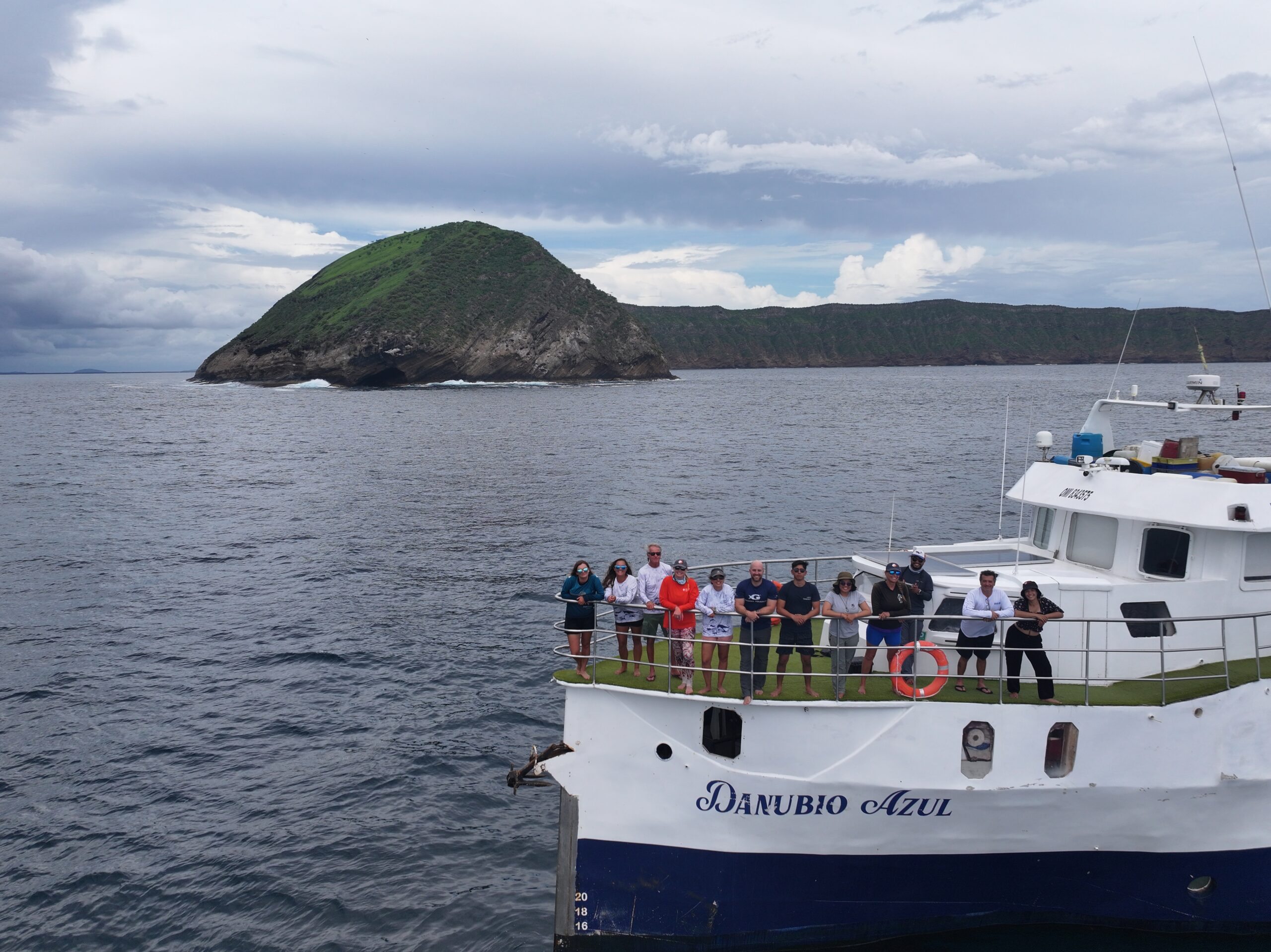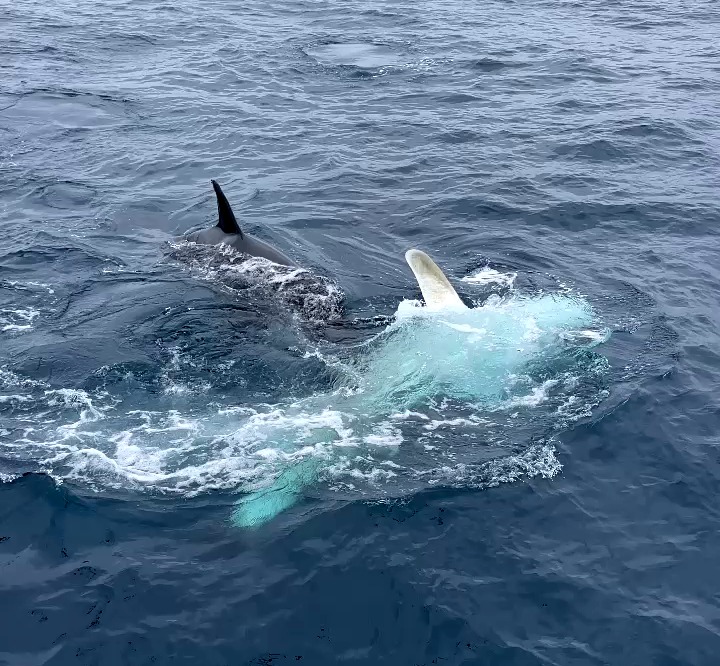On January 14, 2022, the President of Ecuador, Guillermo Lasso, officially signed the declaration to expand the Galapagos Marine Reserve by 60,000 km2. The Galapagos Marine Reserve, also known as the Hermandad Marine Reserve, is recognized as a marine life sanctuary due to the expansive biodiversity it houses. This new Ecuadorian protected area has been called “Hermandad” because it is a shared effort between various productive sectors, scientists, and the authorities, and perhaps also because it represents an important step in the creation of a regional corridor between Ecuador, Colombia, Panama, and Costa Rica.
The Galapagos Marine Reserve was first created on March 18, 1998, and encompassed 138,000 km2. With the new expansion, 30,000 km2 have been added where all types of fishing extraction is banned and another 30,000 km2 where the use of longlines (a mainline with hundreds or even thousands of hooks) is not allowed. This fishing gear, which is used to catch tuna and swordfish, also causes accidental catches of other species, especially sharks and sea turtles, which are in danger of extinction.

Migratory animals such as sharks, turtles, and possibly cetaceans travel annually north of the archipelago over the Cocos submarine mountain towards Isla del Coco (Costa Rica). The objective of this new reserve is to protect this route and work in coordination with Costa Rica, Colombia, and Panama to create a safe transit strip at the regional level for marine life.
Dr. Alex Hearn, professor of Biology at Universidad San Francisco de Quito (USFQ) and scientist at the Galapagos Science Center (GSC), has studied the migratory patterns of threatened species located in the Eastern Pacific Ocean, especially those of the Galapagos, for more than 15 years. His research has contributed significantly to the expansion of the Hermandad Marine Reserve. Below, we asked Alex to share his thoughts around the expansion, its challenges, benefits, and his thoughts for the future.
How was the idea of expanding the Galapagos Marine Reserve born?
AH. Many marine reserves have a process that is exclusively “top-down”, meaning from the authorities down or “bottom-up”, starting at the community level. In this case, this initiative comes from both sides. In 2017, a Chinese vessel was intercepted within the Galapagos Marine Reserve with 8,000 sharks on board. The community expressed its concern about this and thus the “Frente Insular” was born, a group that formed and that began to ask for the marine reserve to be expanded. At the same time, the Vice President of Ecuador at the time, Otto Sonnenholzner, started talking about the possibility of expanding the marine reserve to protect its resources. In 2019, President Lenin Moreno, at the UN Climate Change Conference in Madrid, also spoke of the need to strengthen the protection of the Galapagos due to the threats of climate change. So, this initiative comes from the authorities, from the community, and also from the side of science. Many scientists have spent years working with sharks, birds, and sea turtles, and we see that they move beyond the limits of the current reserve. Furthermore, we evaluated a list of 30 of these highly migratory species and found that they had changed their conservation status from the year 2000 to now. More than half had worsened their conservation status and only two had improved. So, the main objective of the creation of the new marine reserve is to protect the migratory routes of endangered species.
- What have been the main challenges you have had to face? The main difficulty we have faced is being able to have conversations with different sectors. Also, it has been a problem to obtain fishing data, despite several requests we have made to the Secretary of Fisheries. In addition, in the beginning, there was strong opposition from the industrial fishing sector. However, in recent months, through the new government, there was a dialogue process that was much more productive, and that culminated in this new declaration.
What are the benefits for both the community and the conservation of the Galapagos marine species?
The main benefit is for the marine species that use that area. It is an area of 60,000 km2, half of which will be “No Fishing” and the other half will be “No Longline”. So, the species that move in that area will see their mortality threat reduced. We would hope that these impacts on species such as hammerhead sharks, silky sharks, green turtles, leatherback turtles, especially for these highly migratory species, would begin to be mitigated. These species are also of tourist interest. And it also benefits the Galapagos community. Since the engine of the community is tourism, if we can maintain healthy populations of these species of tourist interest, both sides benefit. At the same time, the idea is to help maintain the sustainability of fishing resources that are fished outside the reserve, such as yellow fin tuna or skipjack, which are species that are also fished within the reserve. So, if we can manage to move the fleets away that fish on the edge of the marine reserve, that can discourage the entry of longliners from the coast in that area.
3.What phase is the project currently in and what is the next step?
President Guillermo Lasso has already signed the Decree in January, so now the competent authority, Ministry of the Environment, Water and Ecological Transition is going to establish the guidelines for the new reserve and the management plan. We are very happy because we are going to carry out an expedition with the Galapagos National Park, aboard the Sierra Negra boat, to start creating the baseline, have a monitoring plan, and create very clear indicators so that in 10 to 20 years we can measure the effectiveness of the implementation of this new reserve. We are also looking to track economic impact and to do so we need indicators on fishing activities outside the reserve, so there is a challenge related to trying to improve the recovery and transparency of fishing data and biological data.






